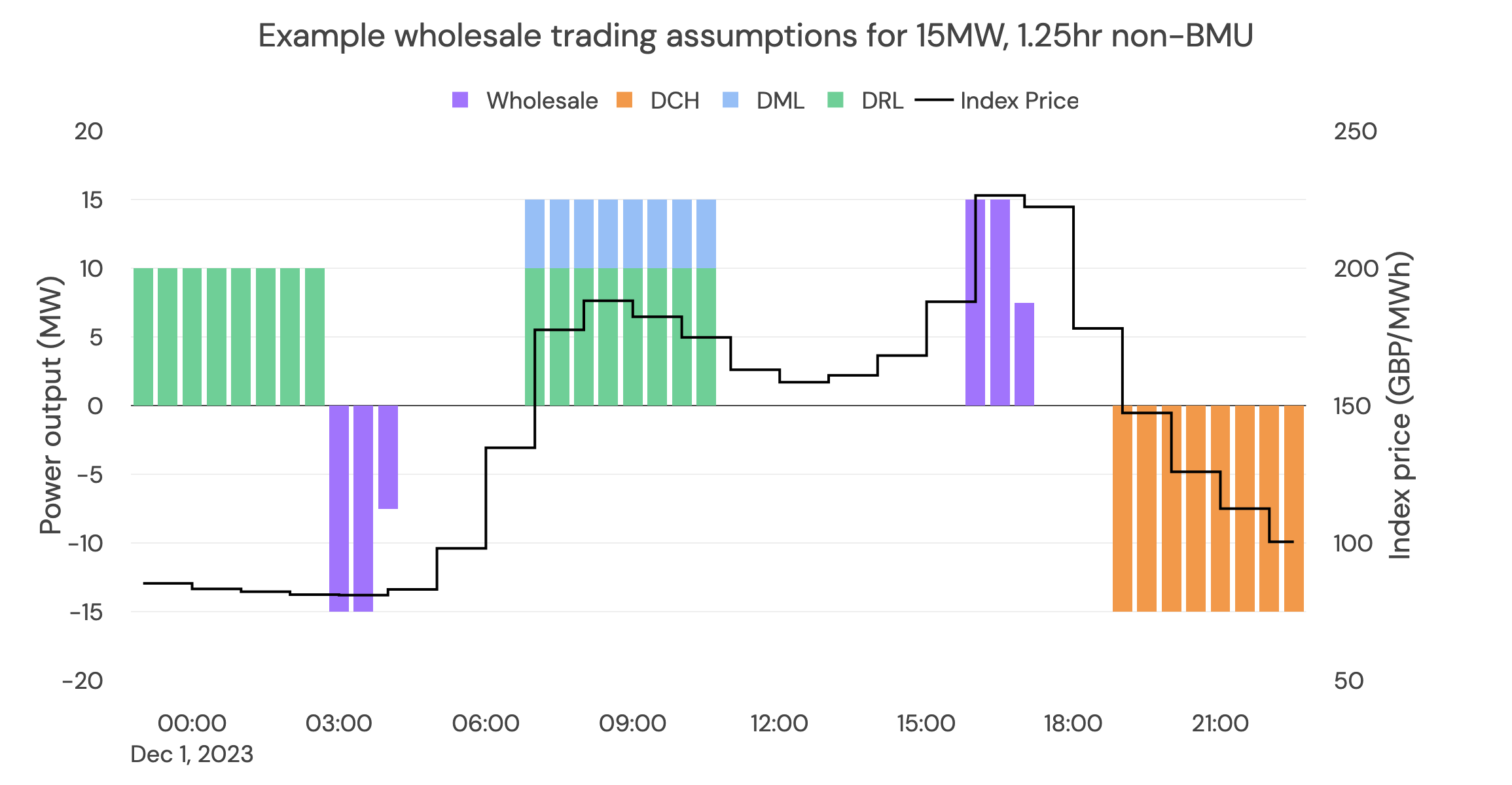Wholesale
Batteries can trade energy on the wholesale markets - making money by buying low and selling high
There are multiple wholesale markets in which batteries can trade energy. You can read more about the different markets here.
Asset operators can trade power via an exchange (like EPEX), or directly with third parties. The individual contracts that asset operators hold to deliver or receive power are not made publicly available, which means we do not have visibility of the details of wholesale trades.
For the purposes of Benchmarking assets against one another, we assume all trades on the wholesale market are conducted at the average of the day ahead hourly prices on the Nordpool and EPEX markets. We refer to this price as the Index Price.
We do not include any non-physical trading in the Benchmark.
Balancing Mechanism registered units
Balancing Mechanism registered units (BMUs) submit physical notifications to ESO. We use these to determine when assets charge and discharge into the wholesale market. It is assumed that all volume enclosed by the physical notifications of a BMU are fully contracted - i.e., the operator is buying or selling energy on the wholesale market at the Index Price, not at the system (or imbalance) price.
Non-Balancing Mechanism registered units
Assets that are not registered Balancing Mechanism units (non-BMUs) do not have the same data-sharing requirements as BMUs, so there is less visibility on their physical operation. Therefore, estimating wholesale revenues for these assets is more complex.
We assume that non-BMUs trade on the wholesale market when there is a spread of over 50 GBP/MWh in the Index Price between EFA blocks. We assume these trades only occur in EFA blocks where the asset is not contracted to provide frequency response (even if it is only partially contracted), and that assets do one full charge and discharge cycle in the trade. To replicate real-life inefficiencies in trading strategies, we assume only 70% of this revenue is captured by the asset.

Example of how wholesale revenues activity would be assigned to a non-BMU.
In the example above, the asset is contracted into frequency response services in EFA blocks 1, 3, and 6. Therefore we assume that the asset is only available for wholesale trading in EFA blocks 2, 4, and 5. Here, the highest spreads are over 50 GBP/MWh so the asset charges at full power in EFA 2 and discharges in EFA 5.
As wholesale revenues are only indicative for non-BMUs, we do not report wholesale activity below 1 month granularity. For example, a non-BMU may show wholesale revenues on the monthly Index Breakdown, but will not show wholesale activity on the asset's revenue operation chart for the same month.
Updated 8 months ago